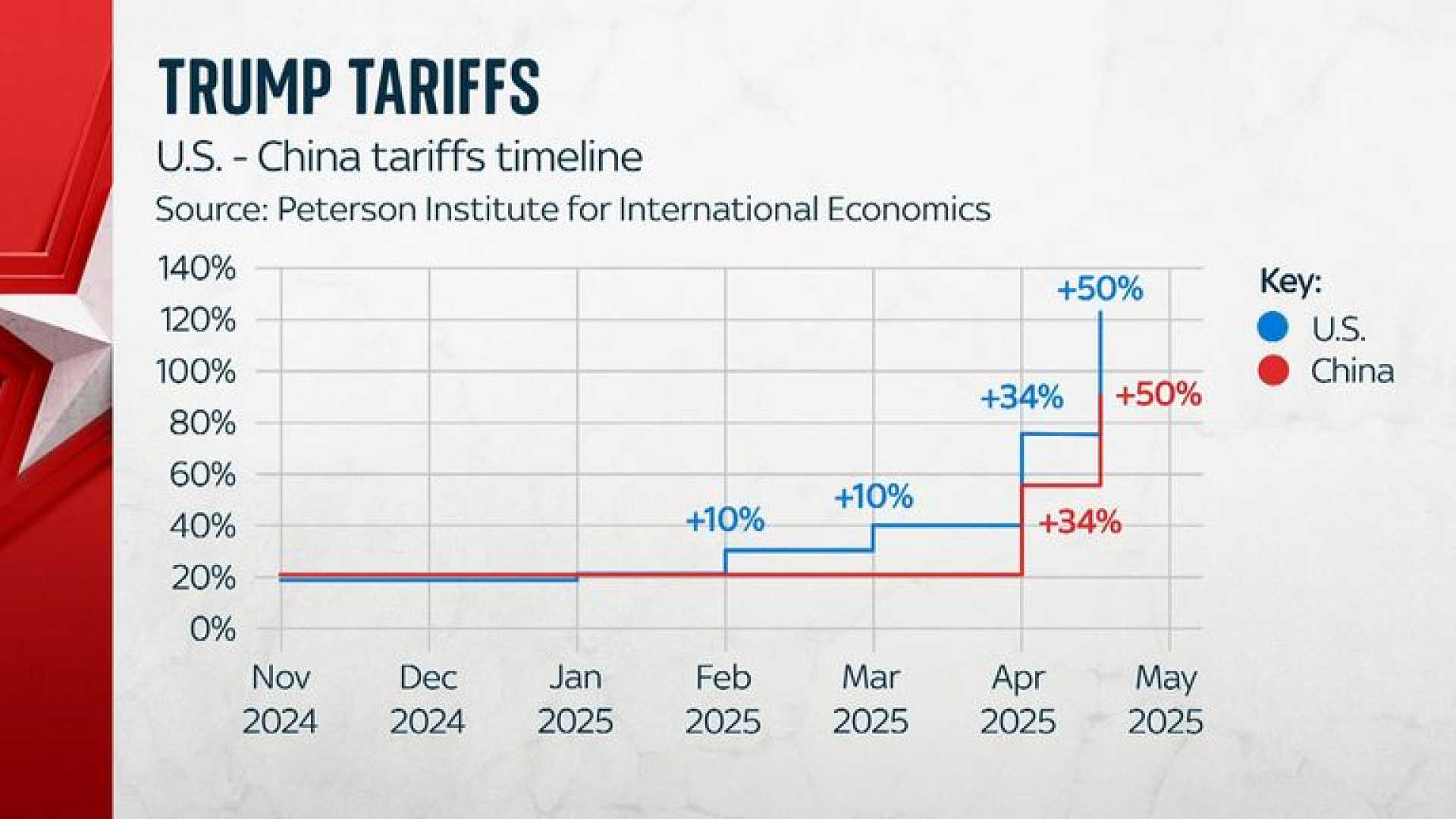Business
China Imposes 84% Tariffs on US Goods as Trade War Escalates

BEIJING, China — A new wave of tariffs hit the U.S.–China trade relationship on Thursday, as China implemented its 84% retaliatory tariffs on American products amid escalating tensions in the ongoing trade war between the two largest economies. The move followed U.S. President Donald Trump’s recent announcement of a pause in steep tariffs for other nations, leaving China excluded from his reprieve.
The change in tariffs comes at a time when financial markets were experiencing significant volatility due to the ongoing trade conflict. After Trump announced a temporary hold on new tariffs abroad, Chinese officials swiftly condemned his actions, asserting their willingness to defend their interests amid the barrage of U.S. threats.
“The U.S. cause doesn’t win the support of the people and will end in failure,” said Lin Jian, spokesperson for China’s foreign ministry, during a regular press conference. China’s commerce ministry simultaneously expressed a potential opening for dialogue, hoping for mutual respect and cooperation in resolving trade discrepancies.
While the trade situation deteriorates, global markets found relief in Trump’s pause; Taiwan’s stocks surged by 9.2%, Japan’s Nikkei 225 increased by 7.2%, and the Dow Jones industrial average experienced an 8% boost. This surge represented one of Wall Street’s best days in decades, with the Nasdaq up 12.2%, marking its largest jump in 24 years.
Trump’s pause allowed for a blanket global tariff rate of 10% but maintained the higher tariffs on China, raising imports to a staggering 125%. In response, China’s e-commerce leaders are alerting businesses to prepare for potential price hikes or withdrawal from the U.S. market altogether due to the “unprecedented blow” from these new tariffs.
“There’s a need for serious negotiations,” Trump stated, suggesting that both sides are keen to find a resolution but criticized China for being reluctant to engage. “They just don’t know how quite to go about it,” he added, speaking about Chinese President Xi Jinping. Despite the U.S. posture, Chinese state media argued that capitulating to U.S. tariff pressure would yield no benefits for Beijing.
World Trade Organization Director-General Ngozi Okonjo-Iweala warned that the escalating tariff conflict could significantly impact bilateral trade operations, projecting an 80% reduction in U.S.–China trade if tensions persist. “It could severely damage the global economic outlook,” she noted during her address.
Amid these developments, China has signaled its intention to foster trade relationships outside of the U.S., as highlighted by Wang Wentao, China’s commerce minister. In his meetings with Southeast Asian partners and European officials, he emphasized the necessity for strengthened coordination and collaboration.
While many nations welcomed Trump’s temporary tariff freeze, concerns over ongoing sector-specific tariffs remain. Japan’s government expressed cautious optimism but reiterated persistent calls for the U.S. to reevaluate its tariffs on steel, aluminum, and various automotive parts.
As tensions continue to heighten, the geopolitical implications of the U.S.–China trade war are becoming increasingly visible, with the likelihood of sustained economic strain impacting both countries. The global community watches closely as each side weighs their next strategic moves.












